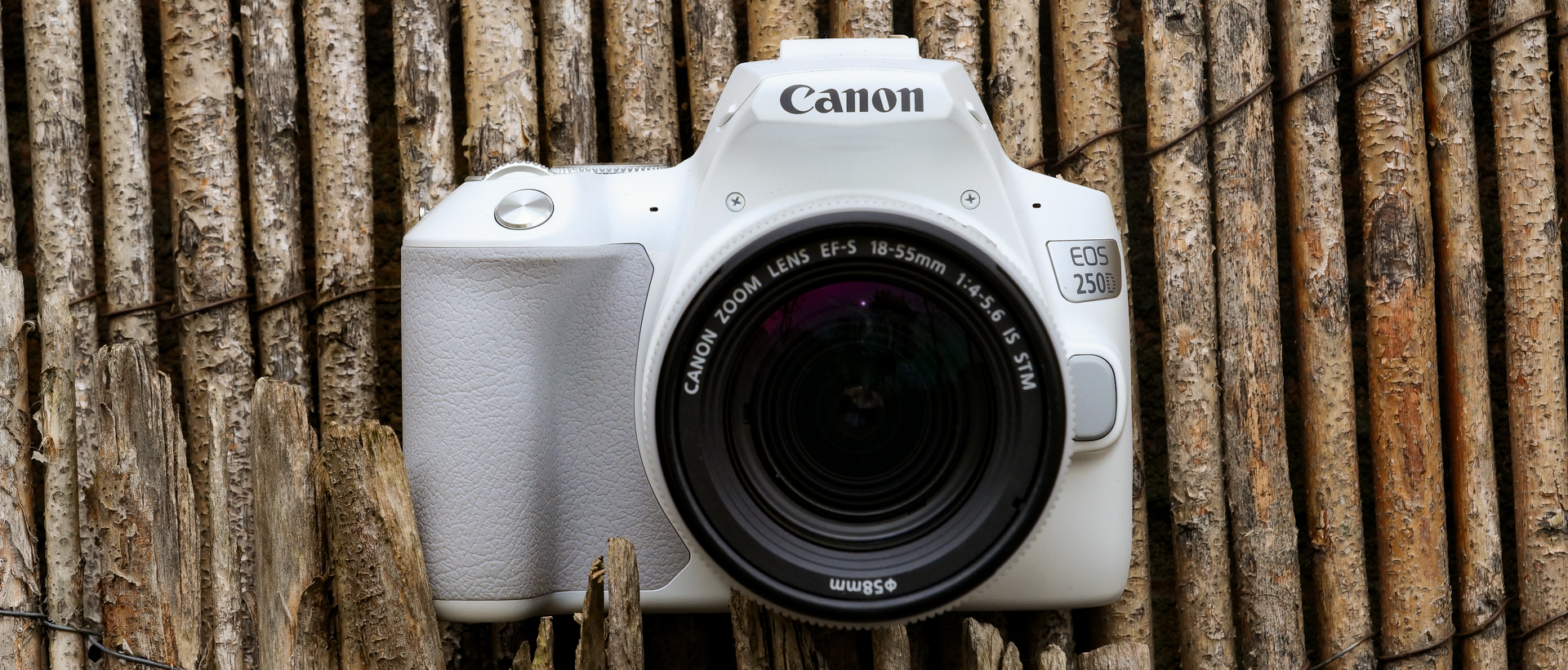Why you can trust TechRadar
Build and handling
- Aluminum alloy/polycarbonate resin chassis
- Largely polycarbonate resin exterior
- World’s lightest DSLR with a moveable screen
Canon bills the EOS Rebel SL3 / EOS 250D as being its smallest and lightest DSLR. It's actually its joint-smallest – the 122.4 x 92.6 x 69.8mm dimensions are precisely the same as the Rebel SL2's – while the black option weighs 4g less than the black Rebel SL2 at 449g, and the white option is 5g lighter than the white SL2 at 451g, all of these measurements are including the battery and card.
Nikon does manage to beat this with its D3500 model, which weighs 415g, although, as Canon points out, the Rebel SL3 is the lightest DSLR with a movable LCD screen. In any case, such a small difference shouldn't be a deal-breaker; it's small, light and no bother to carry around for extended periods of time.
The Rebel SL3's body follows much the same design as the Rebel SL2, although Canon has made a number of small tweaks. The SL3 loses some of the SL2's curves and adopts a more angular style, while some of the controls have been subtly restyled. The depth-of-field preview button has been dropped from the front plate, as has the flash button; to raise the flash you now pull it upwards from one of the grooves to its sides.
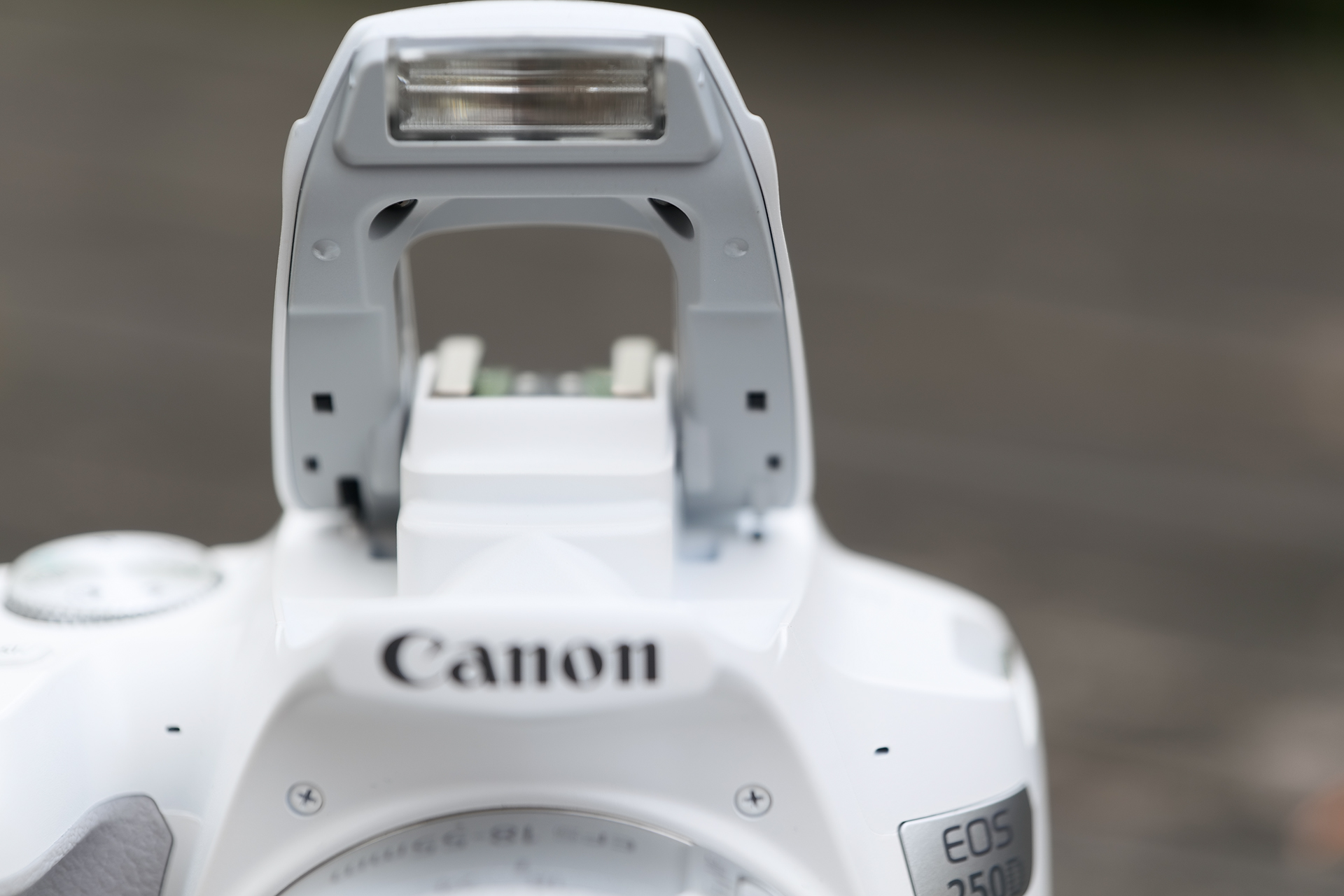
The Wi-Fi button that graced the Rebel SL2's top plate has also been culled, as has the Creative Auto option from the mode dial. This all makes for a simpler design, although it doesn't necessarily feel like a step in the right direction in terms of ease of use and operation.
In the hands, the EOS Rebel SL3 strikes a very good balance between portability, operation and general handling. While the body is very small, the grip is just about adequate to fit nicely into the average-sized hand, and the thumb rest also has just enough space for the average-sized thumb to sit without difficulty.
Rubber is only used for the key parts of the body, which in this case are the grip and thumb rest, but this does improve handling. The rest of the body has a smooth casing and build quality appears to meet expectations; it probably won't fall apart from general use, but it might not take a knock like a camera with magnesium or aluminum alloy used in its outer panels would.
Most of the buttons have good travel and click positively into the body, although some – notably the ISO and Disp buttons on the top plate, and the magnification buttons on the rear – don't offer quite as pleasing feedback, being smaller than the others and needing a bit more of a press. There's only one command dial on the camera, located on the top plate, and this has coarse but positive movement with very good feedback, much like the mode dial just behind it.
Sign up for breaking news, reviews, opinion, top tech deals, and more.
One small annoyance is that the power control's On position lies halfway between the Off and the Movie positions. In practice, it's a little too easy to overshoot this point when you turn the camera on, and end up on the movie mode.
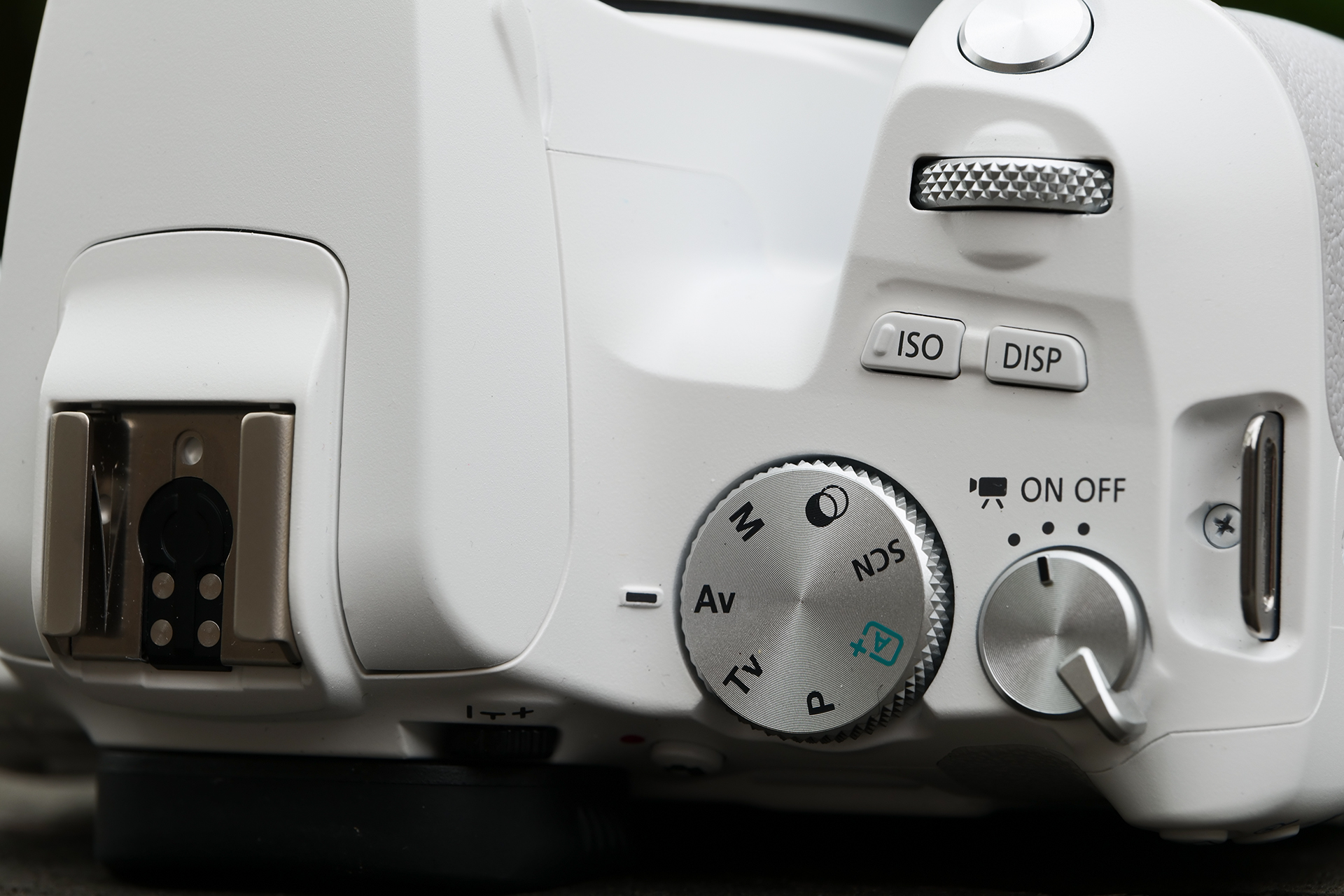

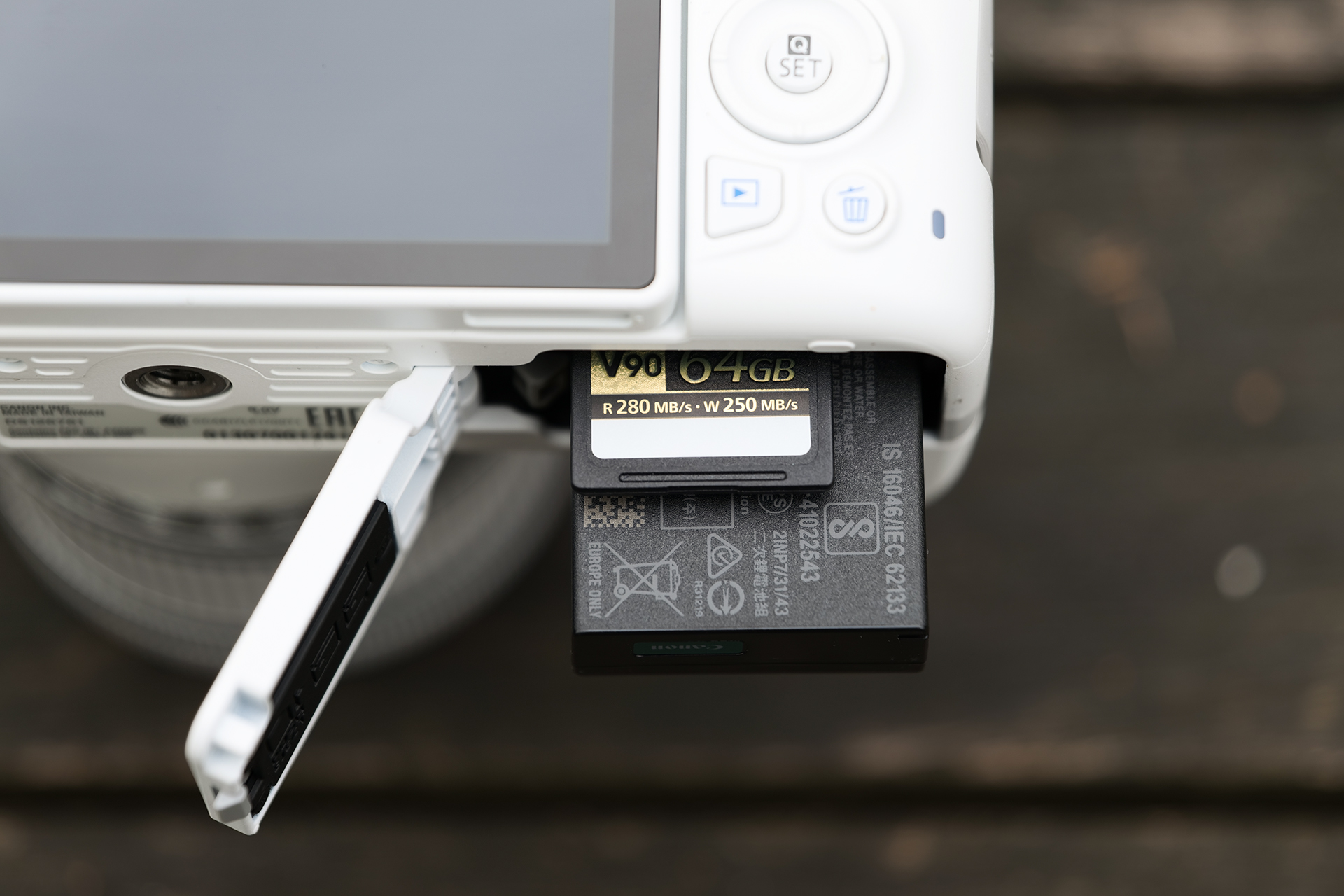
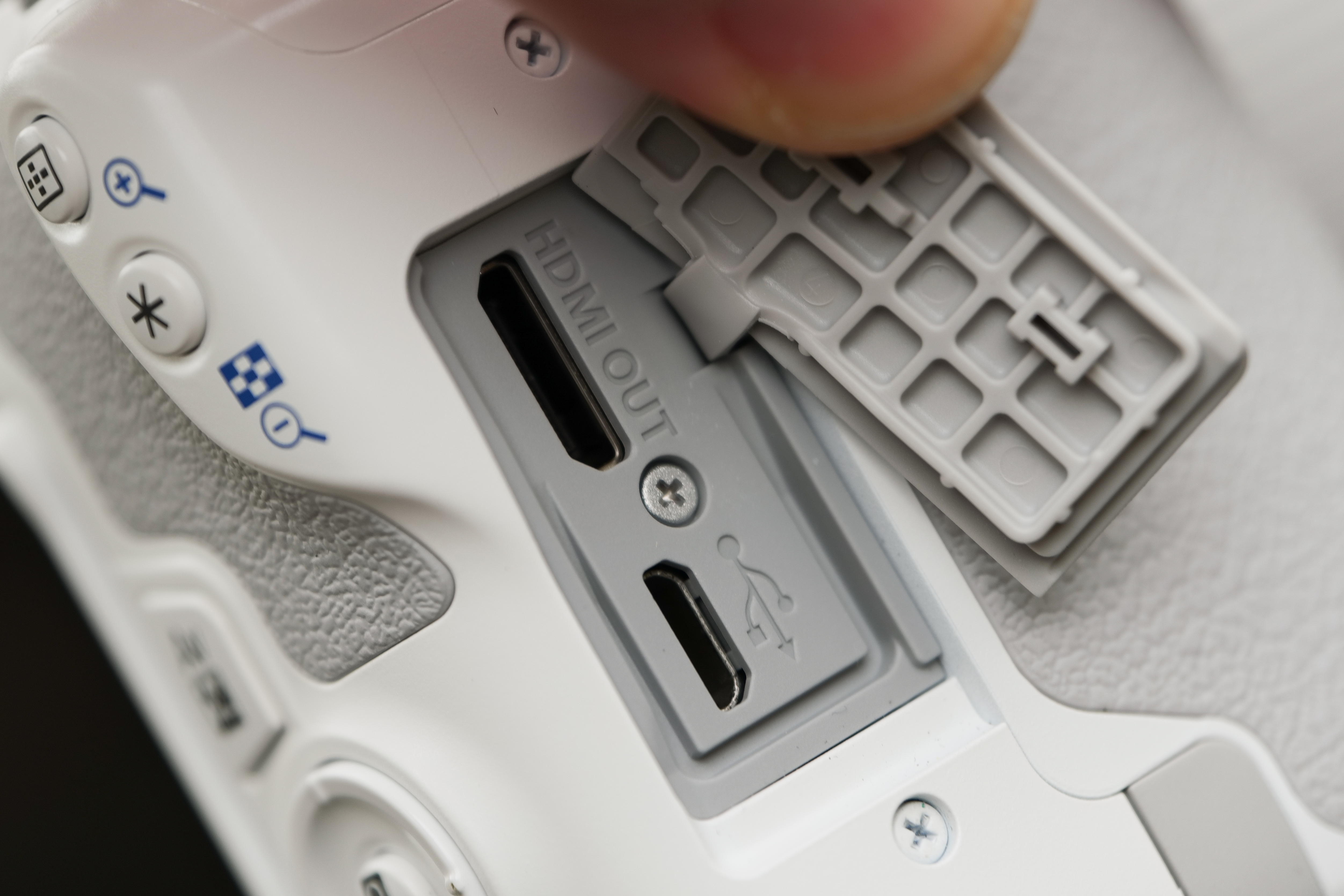
One nice thing about the EF-S 18-55mm f/4-5.6 IS STM lens is that it manages to measure just 61.8mm without needing a retractable, locking construction. This type of design has (annoyingly) become quite common across kit lenses such as these, but the fact that there isn't one here means the you can start shooting as soon as you power up the camera, without having to constantly lock and unlock the lens.
The LCD screen has a nice deep groove above it, which allows you to grab it and pull it away from the camera easily. The fact that you can twist it around also means you can stow it with the screen facing the body to protect it from scratches when you're not using the camera.
Autofocus
- Dual Pixel CMOS AF with 3,975 selectable points
- Eye Detection AF and new Spot AF feature
- 9-point AF system when using viewfinder
When you're using the viewfinder, autofocus is handled by nine AF points arranged in the familiar diamond pattern. This appears to be the same system we saw inside the previous Rebel SL2 and it is, frankly, a little disappointing.
While it covers a reasonable portion of the frame, and may well be fine for static and more distant subjects, the low number of points and their distance from one another make focusing a bit harder when the subject is close up, and you need a point to fall somewhere outside of the nine pre-determined positions.
It also doesn't bode well for tracking moving subjects, which relies on points being closer together, and the fact that only one point is cross-type means the other eight are only sensitive to details in one orientation – this can usually be a bit more of an issue against low-contrast and/or low-detail subjects, although the camera does surprisingly well to find focus against even quite featureless subjects.
Again, both AF spread and tracking is something which mirrorless cameras handle much more easily, so, if you think it's something that is likely to be a deal-breaker for you - think hard about whether you might be better off with a newer system.
In good light the system does a good job of swiftly bringing subjects to focus. In very good light the camera can focus as quickly as you half-press the shutter-release button when you're using the 18-55mm f/4-5.6 IS STM kit lens. Only when it comes to switching focus between close-up and distant subjects, or vice-versa, does the system slow to a more leisurely pace.
Dual Pixel CMOS AF is very much a tried-and-tested system, and this works very well. It's aided by a very responsive touchscreen, which allows focus to be quickly shifted between different subjects by simply pressing where they appear on the screen.
The Dual Pixel CMOS AF system allows the user to position the AF point in one of 3,975 different areas around the frame when using live view. In other words, if you want to put a point anywhere on the screen, you should be able to do that pretty easily. The fact that you can also use the camera's touchscreen to focus on a subject by pressing your finger where the subject appears should also give you an idea of just how accurately you can focus on whatever it is you're shooting.
Dual Pixel CMOS AF is very much a tried-and-tested system, and it works well here. It's aided by a very responsive touchscreen, which allows focus to be quickly shifted between different subjects by simply pressing where they appear on the screen. The camera's light weight also means that, when using either the kit lens or a similarly light optic, you can quite easily hold the body in one hand and use your other to control focus.
Also helping with accuracy is a new Spot AF feature, which is designed to help the user focus on smaller subjects by providing a smaller-than-usual AF point. The Dual Pixel CMOS AF system also now supports Eye Detection AF, which is on hand to help portraits retain sharp and focused eyes. This feature works very well in practice, quickly finding the subject's eye once face detection has kicked in. The system quite easily shifts between eyes if the subject is head-on to the camera, although in such situations focusing on one eye will likely render the other in focus too.
Current page: Build, handling and autofocus
Prev Page Introduction and key features Next Page Performance and image quality